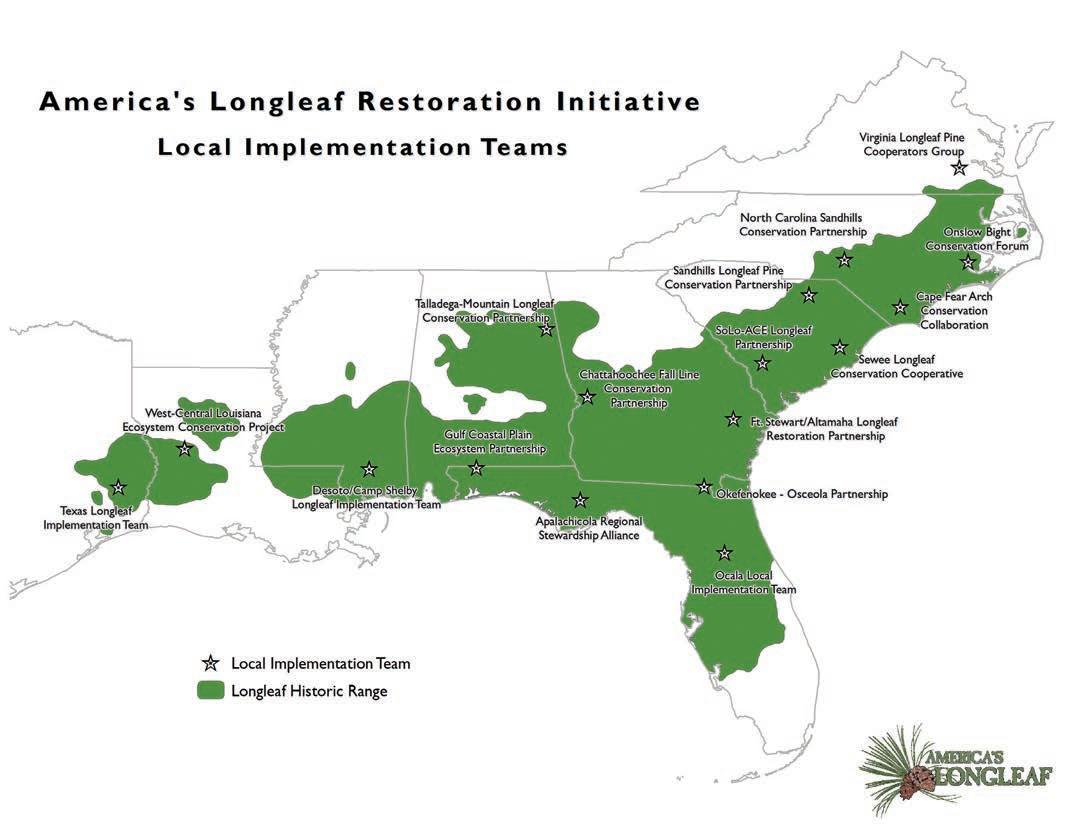
3 minute read
Letters from the Inbox
Q&A
Dear Longleaf Alliance,
Advertisement
I planted longleaf on a tract last November. Everything looked good at planting – I checked the seedlings before they went in the ground, and they were correctly planted. Two months later and the seedlings turned brown. We had some freezing weather in North Carolina, but nothing as extreme as the polar vortex in Texas and Louisiana this past February. Did my seedlings freeze? How can I tell if my trees are dead?
Not Sure in North Carolina
Dear Not Sure,
While there is always a potential for freeze injury when seedlings are exposed to extremely cold temperatures (or even extreme fluctuations in temperature), there are a few encouraging clues in your message. First, you planted early (we recommend planting by December 31st to avoid some cold weather pitfalls), and second, you were on-site at planting, so we know your seedlings were healthy and planted correctly.
So why are your trees brown? Did they freeze? Southern yellow pines acclimate to winter weather gradually. While this provides some cold hardiness, the root system of longgleaf pines never really goes dormant. When temperatures drop for extended periods, there is a risk of freeze injury, especially to the stem at ground level and more vulnerable surface roots.
That said, we suspect your brown seedlings are due to a different issue often called “winter burn.” This “burn” isn’t actually cold injury to the needles but needle browning due to desiccation. In frozen or dry soils, the needles can lose water faster than the roots replace it. They turn brown or reddish, looking scorched. The good news is that seedlings can usually recover from winter-burn once new root growth occurs as soil temperatures increase.
For extra peace of mind, we suggest sacrificing a few seedlings to rule out more severe damage. Gently scrape the bark from the stem and roots to expose the tissue below. Look for brown, damaged tissue; healthy tissue will be white or green. Make sure to do this all the way around, as damage could be visible only on one side. Cut the stem/root lengthwise to check the pith, too – dark brown tissue indicates damage.
For a comprehensive source on winter injury, we suggest this article from the North Carolina Forest Service: www.nclongleaf.org/pdfs/TRB011_ColdInjurySYP.pdf.
Please update us on what you find,
The Longleaf Alliance
*UPDATE
I did as suggested and checked for root/stem damage with the help of my forester. We only saw white, healthy tissue on the stem and roots. Even more reassuring, we saw new needle growth once things warmed up. I’ll keep checking their progress this spring. Thank you! – Not Sure
Dear Longleaf Alliance,
Please help me with a critter identification. I found this creature while putting up a deer stand on my property in Allendale County, South Carolina. It looks like a scorpion! Here in South Carolina? I thought you only found scorpions out West! Is it poisonous?
Allendale Deer Hunter
Dear Allendale,
Yes, the critter in the photo you submitted IS a scorpion, specifically, a southern devil scorpion (Vaejovis carolinianus), also known as a southern unstriped scorpion. This species can vary from 1.56” to 3.12” in length and are medium to dark brown, without any markings. They’re not uncommon on the coastal plain of our southeastern states.
While not poisonous, a term applied to ingested toxins, southern devil scorpions are venomous. The venom is injected from the tip of the scorpion’s abdomen or “tail.” The sting is not lethal, but it is painful. If you are allergic, it can be a much more significant medical problem. Usually, this sting is used to subdue prey like spiders and large insects, but it is also an effective method of getting a person or pet to back off.
You can usually find scorpions hiding out during the day underneath logs, branches, and leaf litter on the ground. I once was startled while measuring the diameter of a pine tree on a timber cruise when one scuttled out from underneath some loose bark.
Scorpions are nocturnal, usually foraging for small insects while we are sleeping. That’s why many folks don’t know they are around and are surprised with the onset of cooler weather when they occasionally find them inside their houses.
I wouldn’t be concerned about finding them around, though. Just be careful if you have allergies, especially to insect stings, and be prepared with a first aid kit when venturing out.
Sincerely,
The Longleaf Alliance
Southern devil scorpion. Photo by Troy Bartlett.
Q.
A.












